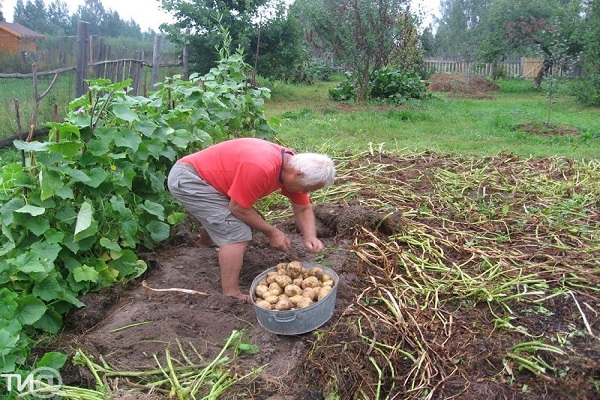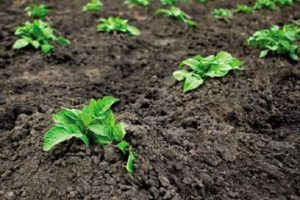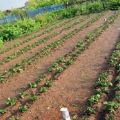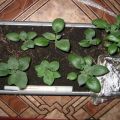Different ways to mulch potatoes to increase yields
All processes in nature are correctly regulated. In forested areas, for example, it is difficult to find soil uncovered with grass or fallen leaves. And this is no accident, because in this way nature protects young plants from frost and pests. Realizing this, people borrowed this method from nature and transferred it to their garden plots. It not only makes it easier to care for plants, but also allows you to increase yields. This is how the mulching of potatoes was invented.
Content
What is potato mulching?
The procedure is an agricultural technique and consists in creating an additional layer of soil. It is covered with artificial or organic material called mulch. It corrects the distribution of moisture in the soil, protects plants from frost, retains heat and helps accelerate the ripening process. Also, mulch is a protection against weeds and pests.
Such a simple, at first glance, method is a real discovery for gardeners.
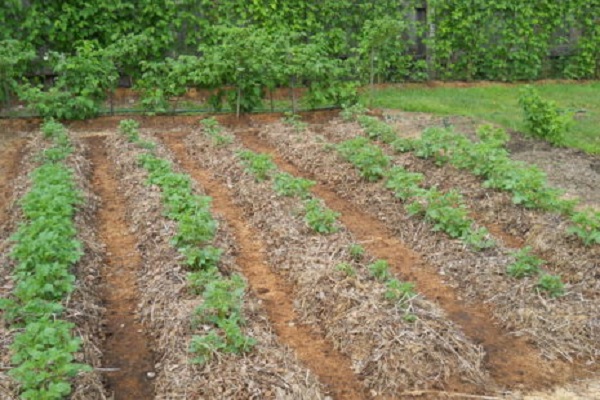
Objectives of the procedure
Mulching is used for:
- even distribution and retention of heat, which allows plants to develop at a fast pace;
- protection young potatoes from low temperatures;
- even distribution of moisture;
- obstacles to the growth of weeds;
- protect potatoes from heat, as the mulch layer reflects light;
- the supply of oxygen to the tubers, since after prolonged rains, the mulched soil does not become covered with a dry crust.
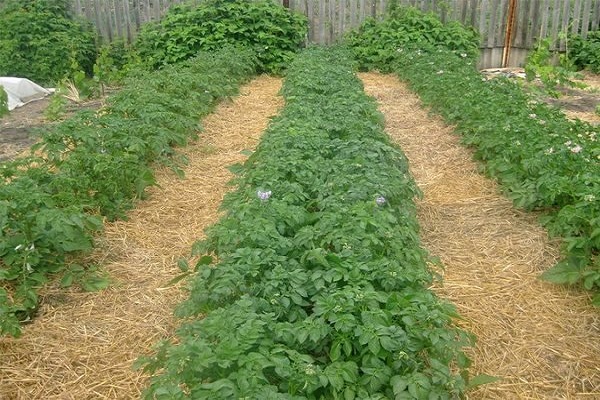
In the rainy season, mulch prevents the fertile layer from washing out. It is also worth noting that pests are extremely rare in it.
Gardeners have long noticed that mulched potatoes yield twice the yield. The relevance of the procedure increases if potatoes grow in loamy and heavy soils.
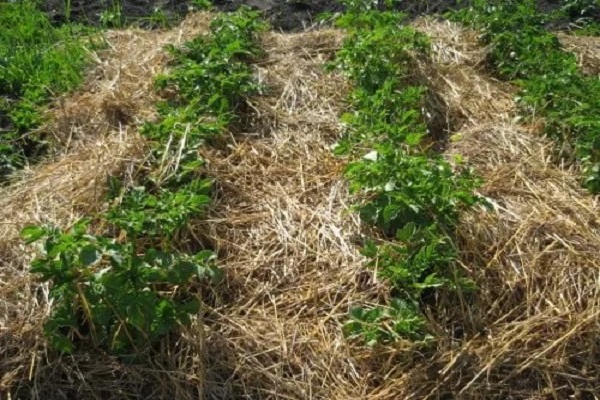
Mulching methods
The procedure is carried out in various ways. Mowed grass, sawdust or humus can be used as material. Each of the materials has its own advantages and can be used by gardeners without a doubt. So that everyone can choose an acceptable way for themselves, let us dwell on each of them in more detail.

Mulching with straw or hay
This method was used a long time ago. Most suitable for warm climates. That straw, that hay - one of the main attributes of any village.
Hay is more suitable for mulching than straw. This is due to the fact that it is softer in structure and contains a lower concentration of weeds.In addition, there are mice in the straw that damage potatoes.
Mulching with hay or straw is as follows:

- potatoes are planted in compliance with the recommended distance between the holes;
- the site is covered with mulch (in this case, hay or straw);
- so that the material holds well, it is recommended to sprinkle it on top with earth;
- after the sprouts reach 5–6 cm, a second layer is laid (about 20 cm);
- the material remains on the potatoes until harvest.
Note! You do not need to weed and spud mulched potatoes. Watering is carried out only during the dry period; the rest of the time, the potatoes are fed by condensation that occurs due to the difference between day and night temperatures.
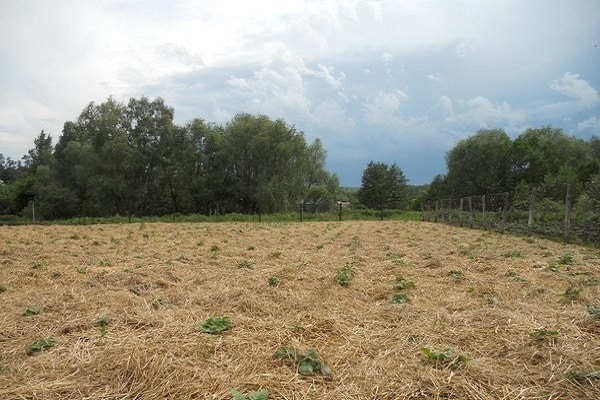
Film mulching
Planting potatoes early increases the risk of frost damage. But even here people found a way out. It is enough to cover the planting area with a film mulch. It retains moisture and raises the temperature of the soil by 2 degrees. This method is suitable for regions with cold climates.
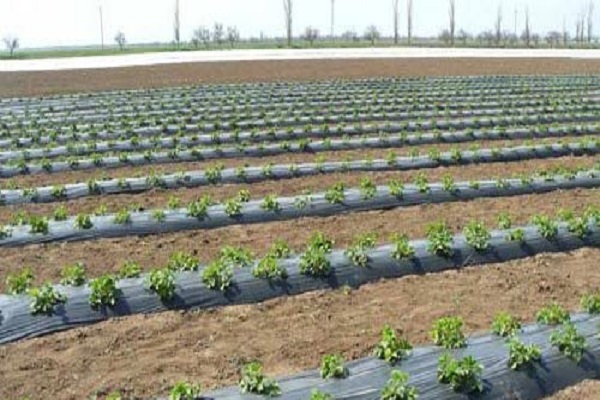
Peat mulching
The fibrous structure of the mulch improves the condition of the soil. This method is suitable in autumn and winter, since peat intensively warms up the soil. It is not recommended to mulch potatoes with peat alone, since, depending on the place of origin, it may contain various plant residues and minerals. Too fresh peat, which is also poorly ventilated, may contain toxic substances. Peat mulching is best combined with grass, manure or sawdust.
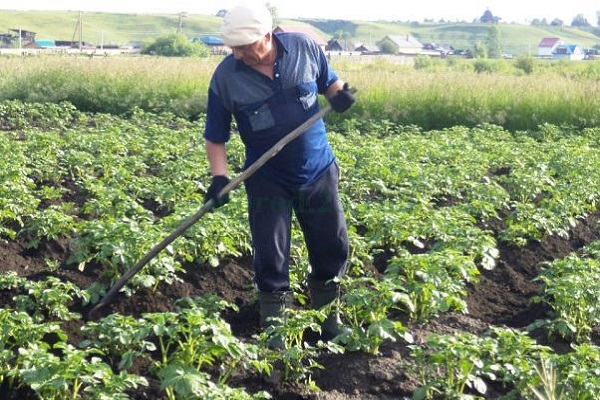
Humus mulching
The material is completely safe, so it can be used without the slightest fear. True, a large amount of humus will be required. The material blocks the growth of weeds, retains moisture and, importantly, destroys pathogenic bacteria. However, a high concentration of nitrogen in humus is contraindicated in oily soils. Otherwise, the tops will begin to grow intensively, slowing down the formation of tubers.

Sawdust mulching
The method is popular in the northern regions of the Russian Federation. The warm sawdust coating promotes the rapid germination of potatoes and protects them from rotting. Before mulching with sawdust, the soil is weeded and watered. Then potatoes are planted, cardboard is placed between the rows, and on top they are crushed with sawdust. The height of the layer is 5–10 cm.
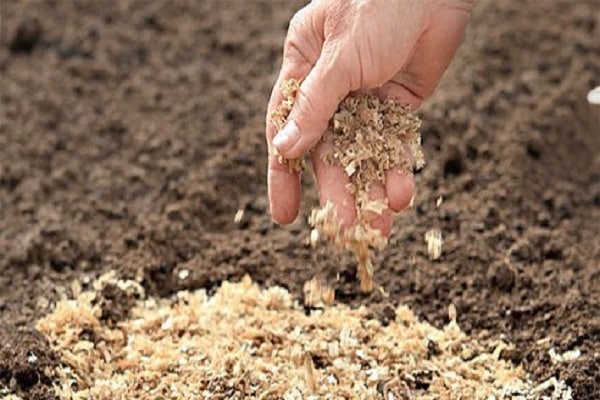
Cone mulching
This method is suitable for those who live in wooded areas. An unusual view of such a shelter will look original on any garden bed. It will protect plants from frost and weeds. The layer of cones should be 5–7 cm. The soil is watered after the cones have been placed on it.
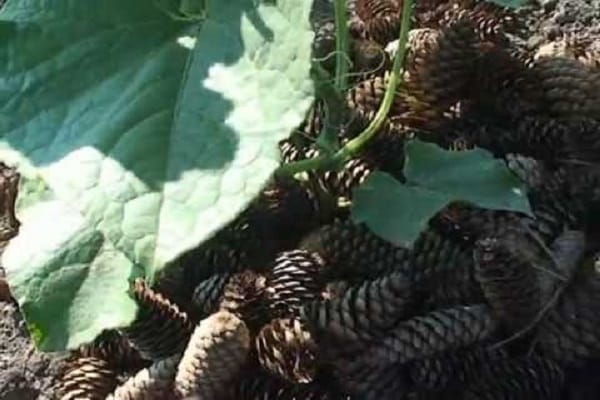
Mulching with green manure
Siderata completely replace the usual fertilizers. In addition, they increase the resistance of potatoes to disease, saturate the soil with nitrogen, displace weeds and improve soil structure. Cut plants are not used fresh. Initially, they should be dried, and then laid out in a layer between rows.
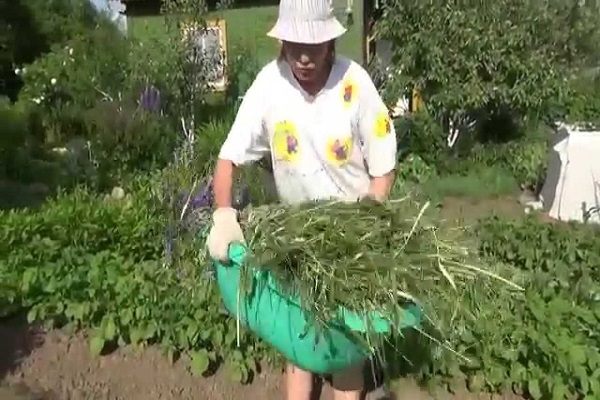
Mulching with cardboard
This is a rather laborious method of mulching, but it greatly facilitates further maintenance. The sheets of cardboard are stacked on top of each other so that the height above the ground is about 30 cm.In the lower layer of cardboard, which will be on the ground, holes are made for each seed potatoes... Then roots are placed in them and cardboard is placed on top. First of all, this method is good in that it protects against weeds that cannot make their way to the sunlight and simply die. Sprinkle the cardboard on top with a 20-centimeter layer of hay or straw.
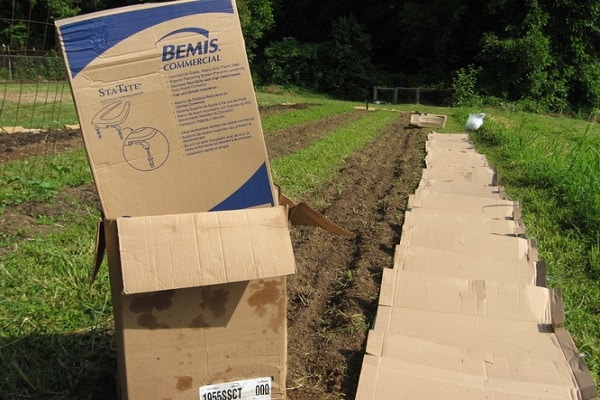
Planting guide
The following method of planting under mulch is universal:
- the soil is pre-loosened;
- potatoes are laid out with sprouts down;
- cover with a layer of mulch on top;
- do not huddle.
It is important to observe moderation, as a large amount of material prevents the soil from drying out.

Possible mistakes
In order to avoid frequent mistakes when mulching, it is important to adhere to the following recommendations:
- The dried grass must dry well before mulching, otherwise the fruits will become infected with late blight.
- If a film is used as mulch, then after the potatoes germinate, ventilation holes are made in it or completely removed;
- Mulching with straw is advisable only after warming up the soil. Do not carry out the procedure in early spring.
- A mulched area, although rare, needs watering.
- It is recommended to maintain the mulch layer: do not overdo it, nor do you economize.
- Only low-lying or transitional, loose peat is suitable for mulching.

Harvesting
A shovel is usually not needed to harvest mulched potatoes. Most of the tubers are located on the surface of loose and soft soil. It is enough to rake off the mulch and pull the bush by the tops. When pulling out the bush, on the lower part of the trunk you can see many additional tubers, which indicates that the yield is twice as high.
Tubers planted under mulch are generally clean. They only need to dry a little before storing.
